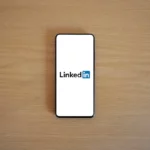A few days ago, I caught up with my friend Alex over coffee. Alex has been diving headfirst into the world of live streaming, particularly focusing on how it turns real-time social media engagement into instant sales opportunities. Being a bit of a marketing enthusiast myself, I was keen to hear more about his experiences and the insights he’d gathered on this digital frontier.
“Live streaming is like opening a direct line to your audience,” Alex began, his eyes lighting up with enthusiasm. “It’s the closest thing to face-to-face you can get online, and it’s amazing for building rapport and trust.”
Intrigued, I asked him to walk me through the process. Alex explained that the first step is choosing the right platform. He uses a mix of Instagram Live and Facebook Live, as they have expansive reach and are user-friendly. However, Twitch and YouTube Live are also popular, especially for niche audiences. “The key is to know where your potential customers hang out,” he noted.
Once you’ve settled on a platform, planning your content is crucial. Alex shared that he starts by identifying a clear objective for each stream. “Are you launching a new product? Offering a behind-the-scenes look? Hosting a Q&A session? Knowing your goal shapes everything else,” he advised.
Alex then described how he prepares for the stream. He emphasises the importance of having a structure, even though the content itself should feel spontaneous and genuine. He typically outlines his main talking points and any calls to action he plans to incorporate. “But don’t script it too much,” he warned. “Authenticity is what people connect with.”
During the actual live stream, Alex makes it a point to engage with viewers by name, responding to comments and questions in real-time. This personal interaction is vital, he explained, as it makes viewers feel valued and heard. He also recommended using features like polls or quizzes to keep the audience engaged and to gather feedback.
A significant part of our chat focused on the transition from engagement to sales. Alex stressed the importance of subtlety. “You can’t just hammer them with a sales pitch,” he smiled. Instead, he integrates his product or service organically into the conversation. For example, if he’s showcasing a product, he might demonstrate its use or share a personal story about it. “It’s about storytelling, not selling,” he said.
Alex also highlighted the use of limited-time offers during live streams. By offering exclusive discounts or perks to viewers, he creates a sense of urgency and exclusivity. “It motivates people to act immediately,” he explained. “They feel like they’re part of something special.”
To convert engagement into sales effectively, Alex uses integrated shopping features available on platforms like Instagram, where viewers can purchase directly from the live stream. Additionally, he ensures that links to purchase are easily accessible, either in the comments or the video description.
As we sipped our coffee, Alex shared a few tips on post-stream activities. He suggested analysing the data from each session to understand what worked and what didn’t. “Look at engagement rates, watch time, and sales conversions,” he recommended. This analysis helps refine future live streams and boosts overall strategy.
Alex also follows up with his audience by sending thank-you messages or exclusive content to those who participated in the stream. “It’s about building relationships,” he reiterated. These follow-ups not only enhance customer loyalty but also keep the conversation going, paving the way for future interactions.
Before we wrapped up, I asked Alex if he had any final thoughts for anyone considering live streaming as a sales tool. He leaned back, contemplating for a moment. “Don’t be afraid to experiment,” he said finally. “Each audience is different, and what works for one might not work for another. The important thing is to stay genuine and adaptable.”
Our conversation left me inspired and eager to explore live streaming further. Alex’s insights painted a picture of a dynamic, interactive approach to sales that leverages the immediacy and intimacy of real-time engagement. By focusing on authenticity, planning, and relationship-building, live streaming can indeed transform how businesses connect with their audience and drive sales.
As I left the café, I couldn’t help but think about the possibilities that live streaming holds. It’s a tool that, when used thoughtfully, can truly revolutionise the way we do business in the digital age.











